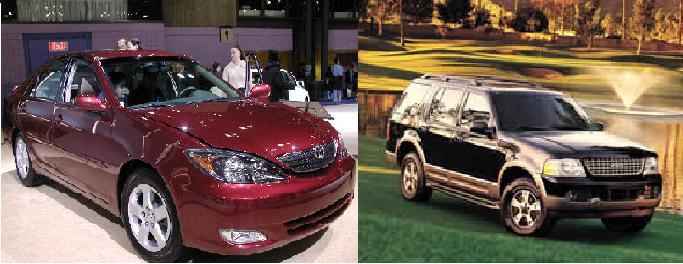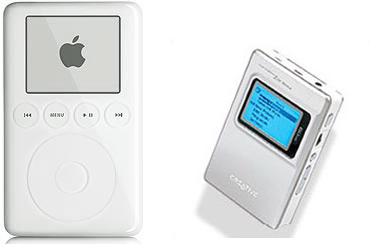Joel Spolsky at CUTC 2005
Joel Spolsky, is a software developer in New York City. He has worked at Microsoft, Viacom, and Juno Online Services. He currently runs his own company, Fog Creek Software, which develops Fog Bugz and City Desk 2.0 .
Joel is popular around the world for (in his own words) his unique sensibilities about software development presented on his weblog. His blog is currently translated in over 30 languages, indicating his global appeal.
Joel has also written two books: User Interface Design for Programmers and Joel on Software. The latter is a cohesive compilation of most of his articles found on his blog. It also happens to be the text book for CSC408: Software Engineering, for the spring 2005 term, offered at the University of Toronto.
We were fortunate enough to have Joel speak at the Canadian Undergraduate Technology Conference - CUTC 2005, on January 21, 2005. A few of us managed to have our copies of Joel on Software autographed by him, and we also had the privilege of joining him for the Joel on Software lunch in Toronto held at the Movenpick Marche at BCE place, right after the seminar.
The following is a summary of his talk at Toronto:
Joel is as engaging in person, as he is on his blog. He started off his lecture talking about the Brad and Jenn 'break-up'. He also pointed out a BBC news clip about Dr. Atkins' death which along with a picture of Dr. Atkins himself, featured Brad and Jenn prominently as followers of the Atkin diet.
Another interesting comparison was between Brad Pitt and Ian Somerhalder. If you're thinking to yourself, "Ian Somerhalder who ?", that's exactly the sort of reaction Joel was aiming for. (According to Joel ) both are comparably good looking and maybe even be equally talented, yet a google search gives us 2.8 million hits for Brad Pitt and just about 68, 000 for Somerhalder.

Brad Pitt vs. Ian Somerhalder
Joel was making the distinction between "Blue Chip" vs. "Off-brand" products. Such as Brad Pitt vs. Ian Somerhalder, or the Apple iPod vs. Creative mp3 player or Julia Roberts and Sandra Bullock. What exactly is the difference between them, what makes one popular, and the other not ?
What makes a Blue chip hit ?
Joel's formula :-
Making People Happy
Joel talked of "making people happy" as equivalent to making them believe that they were in control. He cites Dr. Martin Seligman's, Learned Helplessness, where the author postulates that a feeling of helplessness causes one to be depressed, or in our case - unhappy with the software. To illustrate this he walked us through a simulation of the Microsoft Windows startup and installation of updates - process, where the computer constantly interrupts and prompts him to tell him what to do, frustrating the user. This makes the user feel less in control and therefore unhappy.
Another example he used was the Abercrombie and Fitch versus the Amazon product 'checkout' process. A&F uses a step-by-step checkout mechanism, where the user is walked through the checkout system in four different steps, which are to be performed in sequence, one after the other. In contrast, Amazon has implemented a mechanism by which a user may select a product, and then proceed to any step as per his/her desire. Joel claimed that this additional freedom that is provided to the user makes him/her feel more in control, and thereby more happy and satisfied with the process, even though both processes, eventually, produce the same result.
Thinking about emotions
Joel then talked about how people's emotions can fool them into believing a product is better than the other. He conducted a quick survey in the room, asking the audience about which vehicle they would feel more secure in, a Camry or a Ford Explorer...

Toyota Camry vs. Ford Explorer
The results seemed to match what was found in another survey, where 88 respondents felt they would be safer in the Explorer while only 41 felt the Camry would be safer. This was in complete contrast to the results of a study, where it was found that one is much less likely to be in an accident in a Camry as compared to the Explorer. This was due to it's smaller size and easier manouverability in dangerous situations. Strangely, most people however, picked the Explorer as the safer vehicle due to almost the same reason, i.e. size and height. A bigger and taller vehicle helped them feel, well, bigger and stronger, and therefore less likely to be in an accident.
Joel picked a quote from G. Clotaire Rapaille, a french born anthropologist and psychiatrist to illustrate how something as insignificant as a coffee cupholder could contribute to a sense of safety in a vehicle.
Joel used these as examples to illustrate how it is almost as important to think of people's emotions and their reaction to what they experience through the product, as it is to develop a good quality and functional product. Perception is everything, and one wouldn't want to lose out in the market for simply not having put in a cupholder in the car.
Obsessing over aesthetics
Joel then talked about the importance of taking pains over the aesthetics of your product and how it makes a difference in the impact the product makes to the user. As an illustration, he chose Apple's iPod and Creative's Nomad Jukebox Zen Xtra mp3 player. Though both of them play mp3's and though Creative's product may have as much, if not more feature's than the iPod, it sells for almost $100 less, and is way less popular.

Apple iPod vs. Creative's Nomad Zen Xtra mp3 player
Joel observed that Apple's almost perfect looks accounts for a huge portion of it's popularity. To illustrate, he demonstrated how the iPod is created as a smooth structure with rounded edges, with no screws or latches, due to which one cannot change it's battery, which though rechargeable, will eventually need changing. However, most electronic gadgets have latches or screws at the back in order to change the battery. Joel guesses that this was done on purpose by designers at Apple in order that it's perfect symmetry and looks are not ruined by the addition of latches or screws. Whatever the reason, it seems to have paid off.
Joel compared a Software system to an iceberg. He likened the 9/10ths of the iceberg that is under the water to the system's Guts and the 1/10th that stuck out of the water as the Lipstick. Customers rarely looked at or cared about the Guts of a system, and all they really saw was the lipstick, which is really just 1/10th of the system. However, for this very reason, it is extremely important to pay attention to the overall look and feel of the system, in order to have a successful product.
Summary
Joel summarized his entire talk with one word - Misattribution. He defines it as what happens when you have a reaction to something, and think that that the reaction is because of soething else.
He used the following examples to illustrate this :
His point seemed to be that though it is important to develop good quality and functional software, it is equally important, if not more so, to make people happy, think about their emotions and obsess over the aesthetics of your product, if you really want to sell it.
Personal Comment: Joel certainly practiced what he preached. While he presented some valid points, his presentation consisted of a lot of jokes, pictures of glamorous stars and even some good music, all going a long way in making us, the audience, happy. At the end of his talk, Joel alluded to how he had used misattribution on us, with "Sweet Home Alabama" playing in the background, and by the time he had said his final 'thank you', the audience was giving him one of the biggest rounds of applause I had heard all through the conference!
Joel is popular around the world for (in his own words) his unique sensibilities about software development presented on his weblog. His blog is currently translated in over 30 languages, indicating his global appeal.
Joel has also written two books: User Interface Design for Programmers and Joel on Software. The latter is a cohesive compilation of most of his articles found on his blog. It also happens to be the text book for CSC408: Software Engineering, for the spring 2005 term, offered at the University of Toronto.
We were fortunate enough to have Joel speak at the Canadian Undergraduate Technology Conference - CUTC 2005, on January 21, 2005. A few of us managed to have our copies of Joel on Software autographed by him, and we also had the privilege of joining him for the Joel on Software lunch in Toronto held at the Movenpick Marche at BCE place, right after the seminar.
The following is a summary of his talk at Toronto:
Joel is as engaging in person, as he is on his blog. He started off his lecture talking about the Brad and Jenn 'break-up'. He also pointed out a BBC news clip about Dr. Atkins' death which along with a picture of Dr. Atkins himself, featured Brad and Jenn prominently as followers of the Atkin diet.
Another interesting comparison was between Brad Pitt and Ian Somerhalder. If you're thinking to yourself, "Ian Somerhalder who ?", that's exactly the sort of reaction Joel was aiming for. (According to Joel ) both are comparably good looking and maybe even be equally talented, yet a google search gives us 2.8 million hits for Brad Pitt and just about 68, 000 for Somerhalder.

Brad Pitt vs. Ian Somerhalder
Joel was making the distinction between "Blue Chip" vs. "Off-brand" products. Such as Brad Pitt vs. Ian Somerhalder, or the Apple iPod vs. Creative mp3 player or Julia Roberts and Sandra Bullock. What exactly is the difference between them, what makes one popular, and the other not ?
What makes a Blue chip hit ?
Joel's formula :-
- Making people happy
- Thinking about emotions
- Obsessing over aesthetics
Making People Happy
Joel talked of "making people happy" as equivalent to making them believe that they were in control. He cites Dr. Martin Seligman's, Learned Helplessness, where the author postulates that a feeling of helplessness causes one to be depressed, or in our case - unhappy with the software. To illustrate this he walked us through a simulation of the Microsoft Windows startup and installation of updates - process, where the computer constantly interrupts and prompts him to tell him what to do, frustrating the user. This makes the user feel less in control and therefore unhappy.
Another example he used was the Abercrombie and Fitch versus the Amazon product 'checkout' process. A&F uses a step-by-step checkout mechanism, where the user is walked through the checkout system in four different steps, which are to be performed in sequence, one after the other. In contrast, Amazon has implemented a mechanism by which a user may select a product, and then proceed to any step as per his/her desire. Joel claimed that this additional freedom that is provided to the user makes him/her feel more in control, and thereby more happy and satisfied with the process, even though both processes, eventually, produce the same result.
Thinking about emotions
Joel then talked about how people's emotions can fool them into believing a product is better than the other. He conducted a quick survey in the room, asking the audience about which vehicle they would feel more secure in, a Camry or a Ford Explorer...

Toyota Camry vs. Ford Explorer
The results seemed to match what was found in another survey, where 88 respondents felt they would be safer in the Explorer while only 41 felt the Camry would be safer. This was in complete contrast to the results of a study, where it was found that one is much less likely to be in an accident in a Camry as compared to the Explorer. This was due to it's smaller size and easier manouverability in dangerous situations. Strangely, most people however, picked the Explorer as the safer vehicle due to almost the same reason, i.e. size and height. A bigger and taller vehicle helped them feel, well, bigger and stronger, and therefore less likely to be in an accident.
Joel picked a quote from G. Clotaire Rapaille, a french born anthropologist and psychiatrist to illustrate how something as insignificant as a coffee cupholder could contribute to a sense of safety in a vehicle.
That's why cupholders are absolutely crucial for safety. If I can put my coffee there, if I can have my food, if everything is round, if it is soft, and if i'm high, then I feel safe.
G. Clotaire Rapaille
Joel used these as examples to illustrate how it is almost as important to think of people's emotions and their reaction to what they experience through the product, as it is to develop a good quality and functional product. Perception is everything, and one wouldn't want to lose out in the market for simply not having put in a cupholder in the car.
Obsessing over aesthetics
Joel then talked about the importance of taking pains over the aesthetics of your product and how it makes a difference in the impact the product makes to the user. As an illustration, he chose Apple's iPod and Creative's Nomad Jukebox Zen Xtra mp3 player. Though both of them play mp3's and though Creative's product may have as much, if not more feature's than the iPod, it sells for almost $100 less, and is way less popular.

Apple iPod vs. Creative's Nomad Zen Xtra mp3 player
Joel observed that Apple's almost perfect looks accounts for a huge portion of it's popularity. To illustrate, he demonstrated how the iPod is created as a smooth structure with rounded edges, with no screws or latches, due to which one cannot change it's battery, which though rechargeable, will eventually need changing. However, most electronic gadgets have latches or screws at the back in order to change the battery. Joel guesses that this was done on purpose by designers at Apple in order that it's perfect symmetry and looks are not ruined by the addition of latches or screws. Whatever the reason, it seems to have paid off.
Joel compared a Software system to an iceberg. He likened the 9/10ths of the iceberg that is under the water to the system's Guts and the 1/10th that stuck out of the water as the Lipstick. Customers rarely looked at or cared about the Guts of a system, and all they really saw was the lipstick, which is really just 1/10th of the system. However, for this very reason, it is extremely important to pay attention to the overall look and feel of the system, in order to have a successful product.
Summary
Joel summarized his entire talk with one word - Misattribution. He defines it as what happens when you have a reaction to something, and think that that the reaction is because of soething else.
He used the following examples to illustrate this :
- You buy a large coke at the movie's. The caffeinated Coke increases your pulse rate and in general causes you to hyper react. At the end of the movie, you emerge thinking you have seen an excellent movie, while in reality, you are simply misattributing your reaction to the Coke towards the movie.
- You take a date to a coffee house instead of a movie/bar. The coffee increases your date's heart rate, and by the end of the date, she misattributes the reaction to mean that she has fallen in love with you.
His point seemed to be that though it is important to develop good quality and functional software, it is equally important, if not more so, to make people happy, think about their emotions and obsess over the aesthetics of your product, if you really want to sell it.
Personal Comment: Joel certainly practiced what he preached. While he presented some valid points, his presentation consisted of a lot of jokes, pictures of glamorous stars and even some good music, all going a long way in making us, the audience, happy. At the end of his talk, Joel alluded to how he had used misattribution on us, with "Sweet Home Alabama" playing in the background, and by the time he had said his final 'thank you', the audience was giving him one of the biggest rounds of applause I had heard all through the conference!

3 Comments:
awesome report on joel's talk.
how did u remember so much detail? did u take notes?
and howcome u didnt mention the lunch?
Neways, great job man! Methinks me should also get one of them blogger accounts hmm...
wow... You just become a write Phil. Seriously... I think I had as much fun reading it as you did listening to the talk.
Great Job!
Unfortunately I missed the talk but I am glad I came acroos it, very well written :)
Zubair
Post a Comment
<< Home